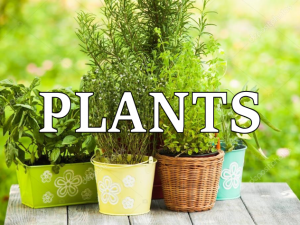
What is plants?
Deciding which plants to use for your home's landscape can be a challenge. Many factors must be considered, beyond simply choosing the plants you find to be the most attractive. You'll need to consider your climate and the amount of time you want to devote to maintenance. You'll also need to find plants suitable for exposure conditions, such as sun or shade or dry or rainy weather.
Additionally, you should think about what you want your plants to achieve. Are you looking to add shade or privacy to your property? Do you want something fragrant and colorful that will attract birds, butterflies and other wildlife? You should also select landscape plantings that reflect the style of your garden. Most plants suitable for a quaint cottage-style garden will look out of place in a garden with a sultry Mediterranean or tropical theme.
Garden Plants and Flowers
Learn how to discover which plants underscore and help define a specific garden design style.
Choose the right plants to pull off a perfect garden design. It sounds simple enough. But the reality is that matching garden plants with garden design styles requires a little homework—or at times even a lot. For experienced greenthumbs, selecting the right garden flowers for their growing region may be a cinch. But plugging the right plant into the right garden style can prove tricky.
Or you might plan a trip to public display gardens. If you visit in summer, you’ll probably encounter tropical flowering plants you might want to consider for your home garden. Many garden centers that offer landscape design showcase their wares in on-site display gardens. These gardens also provide a great place for inspiration. Take plenty of photos to record the plants and combinations you like best.
How to Group Plants Together in Your Landscaping
You may like a lot of different plants, but when designing your own landscape, you may not be sure how to group them. There are, of course, aesthetic considerations (please consult landscape design for beginners to learn more about these artistic factors), one of the most basic of which is that, in planting bedding plants, you will produce a greater effect if you mass like plants together (rather than installing one here, one there). Even in planting foundation shrubs, the rule is to plant like shrubs together in groups of three or five (even numbers can sometimes look awkward).
One aesthetic trick that beginners often fail to avail themselves of is varying plant texture and plant form within the same flower border. This is because those new to gardening and landscaping tend to gravitate to flowers, mesmerized by the color that they afford the landscape.
Flowers are wonderful, but they are not the final word in landscape splendor. Veteran plant growers tend to place less emphasis on blooms and come to understand how much fun it is to play with texture and form. Juxtaposing plants with contrasting textures or forms can create fascinating contrasts.

